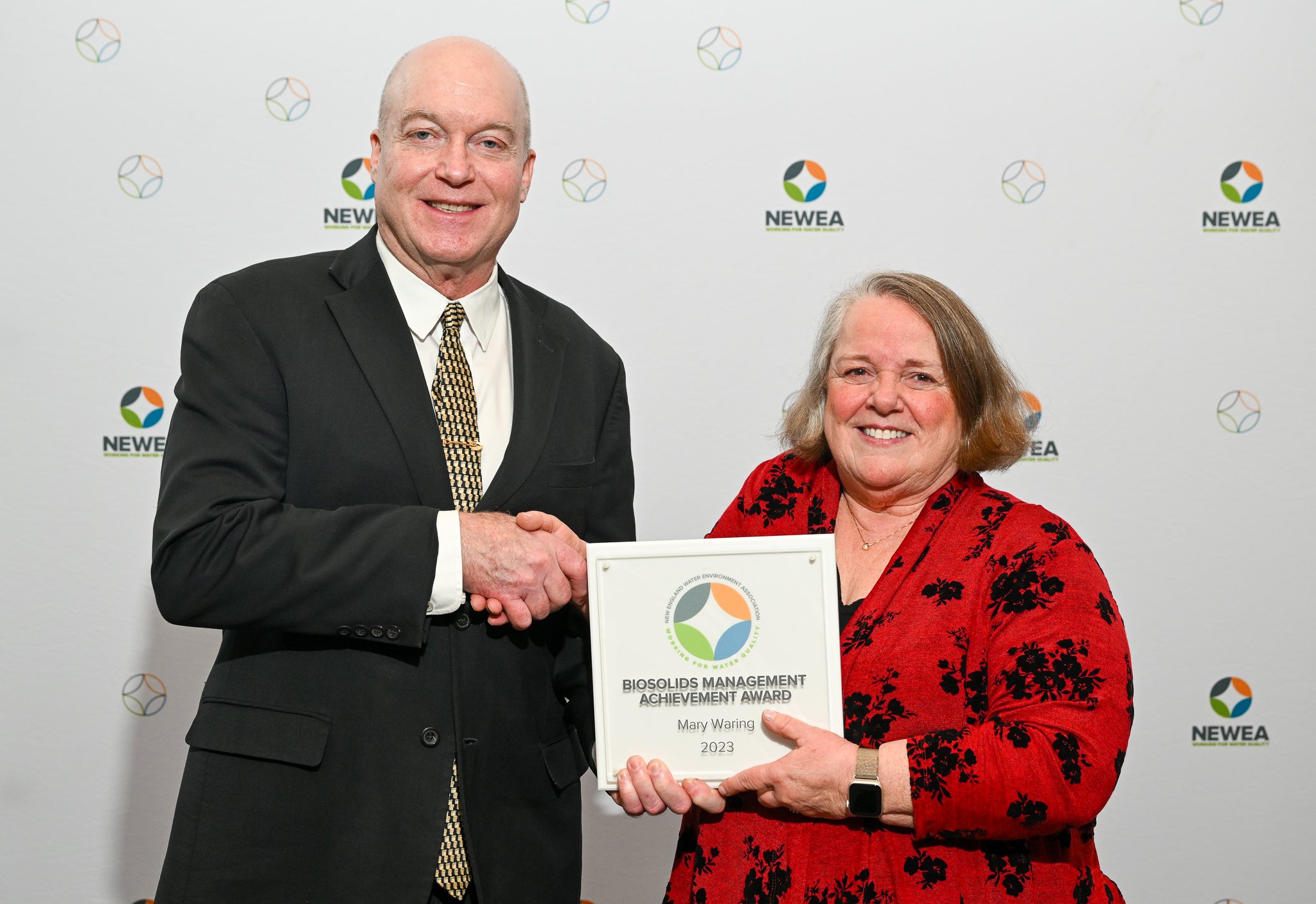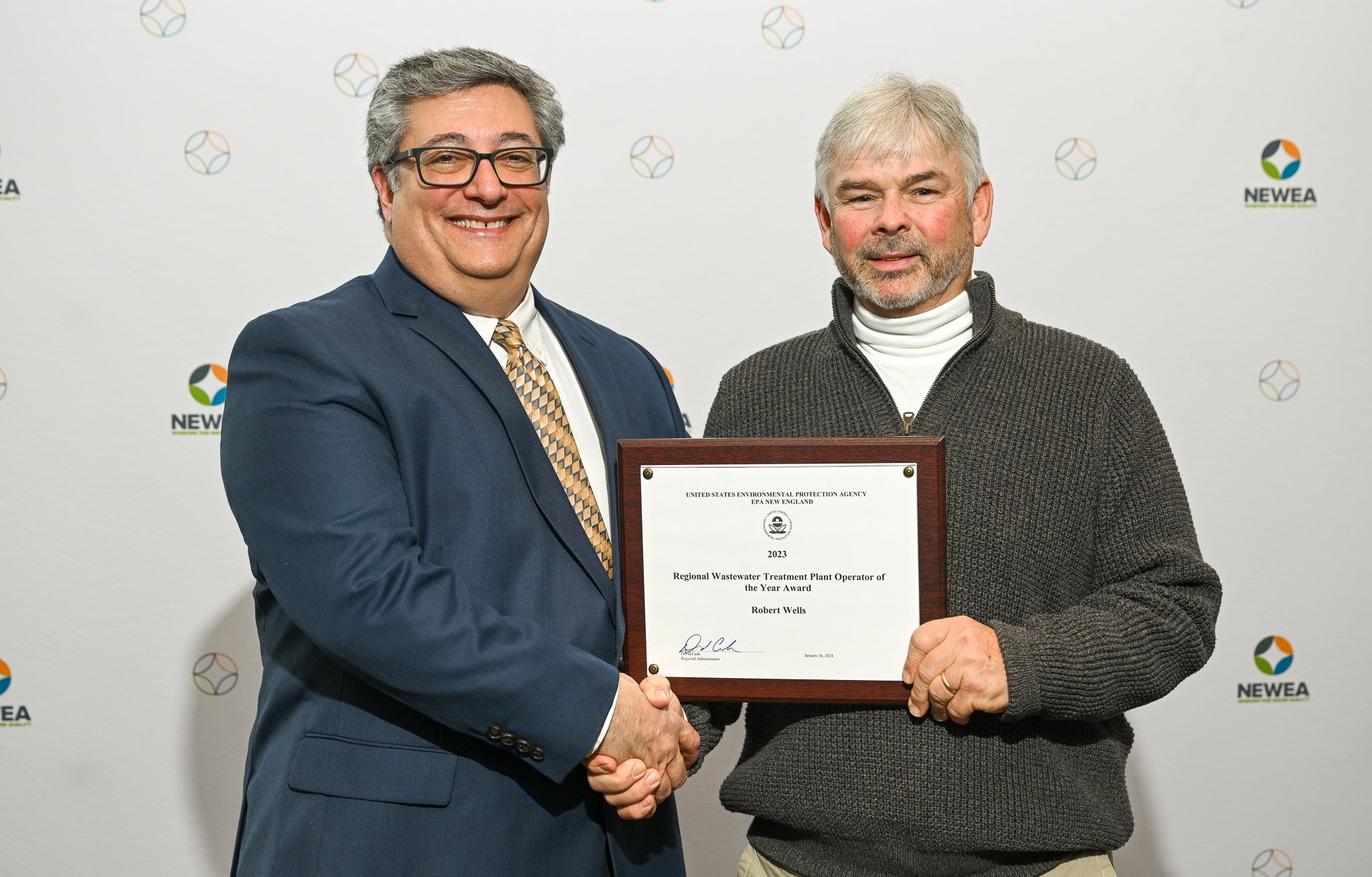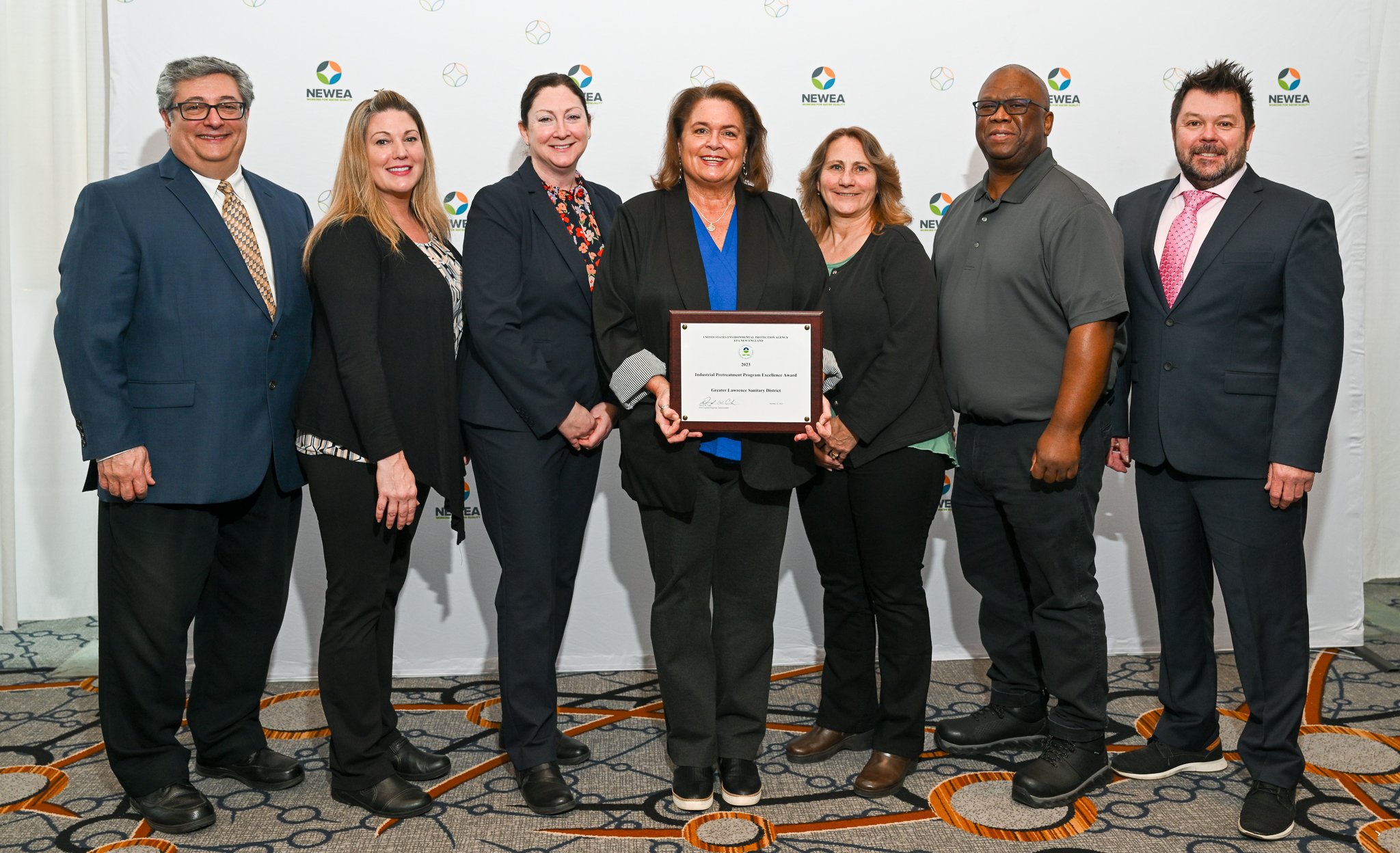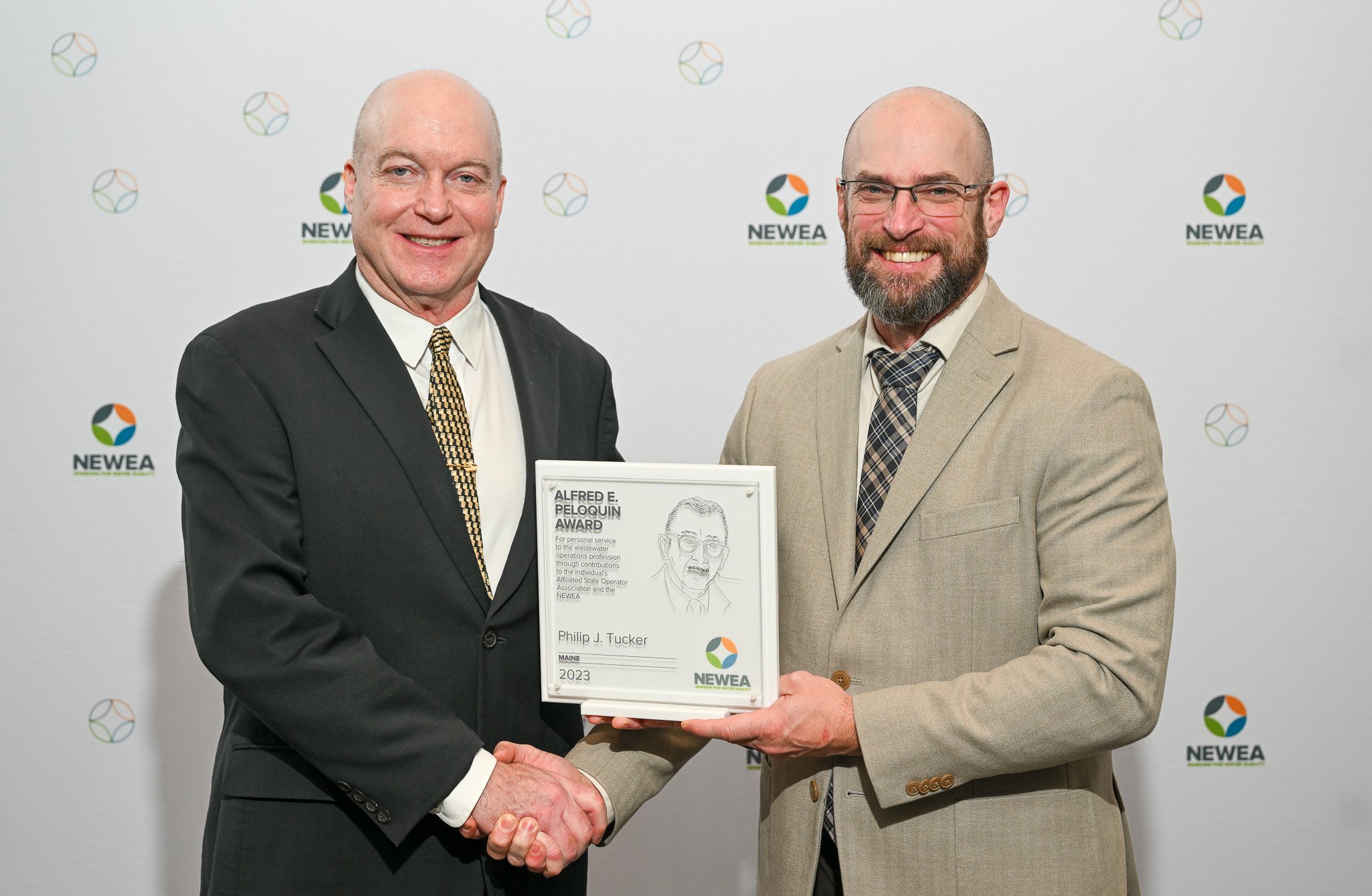The annual conference of the New England Water Environment Association (NEWEA) took place in Boston last month with attendance numbers back to – and even better than – pre-COVID days. More than 2,700 clean water professionals turned out for the event which was held from January 21st through January 24th. NEBRA and lots of its members participated in activities that included big picture policy discussions, technical sessions, the trade show, NEWEA committee meetings and more.
NEBRA’s collaboration with NEWEA continues to be strong and fruitful. NEBRA’s Executive Director, Board Members and numerous NEBRA members contributed to the conference’s success by presenting, moderating, and facilitating discussions. Several NEBRA members were recognized for their work with NEWEA Awards. All in all, it was a very good conference with something for everyone!
On Tuesday morning, NEBRA Executive Director Janine Burke-Wells teamed up with NEBRA Past President (and President-Elect for NEWEA) Deborah Mahoney with Brown & Caldwell for a presentation on “PFAS in Biosolids: How to Be Part of the Conversation!” with resources, examples, and encouragement for clean water utilities to talk about PFAS with their customers. NEBRA members can see a copy of the slides here: NEBRA Members — NEBRA (nebiosolids.org).
Burke-Wells was a panelist for the plenary discussion on Tuesday along with Brian Tarbuck, a NEBRA member and General Manager of the Greater Augusta Utility District. Building on last year’s session on the Clean Water Act’s 50th Anniversary, this year’s session was all about “The Next 50 Years: Communications, Climate, Innovation and Investment”. Burke-Wells spoke about what she sees the as the challenges and opportunities the next 50 years will bring – and she brought her perspective as a former regulator who still mainly identifies as an operator.
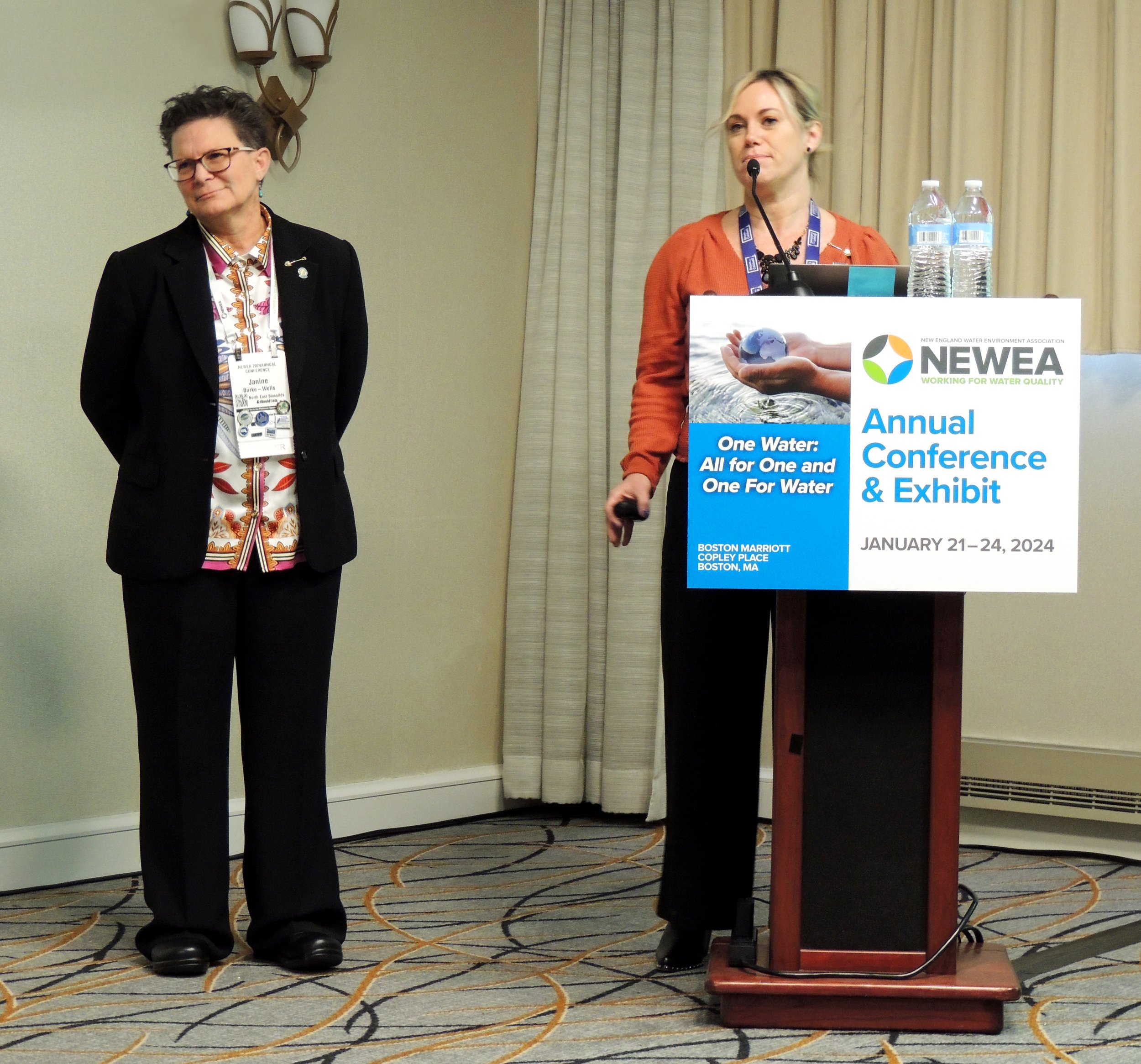
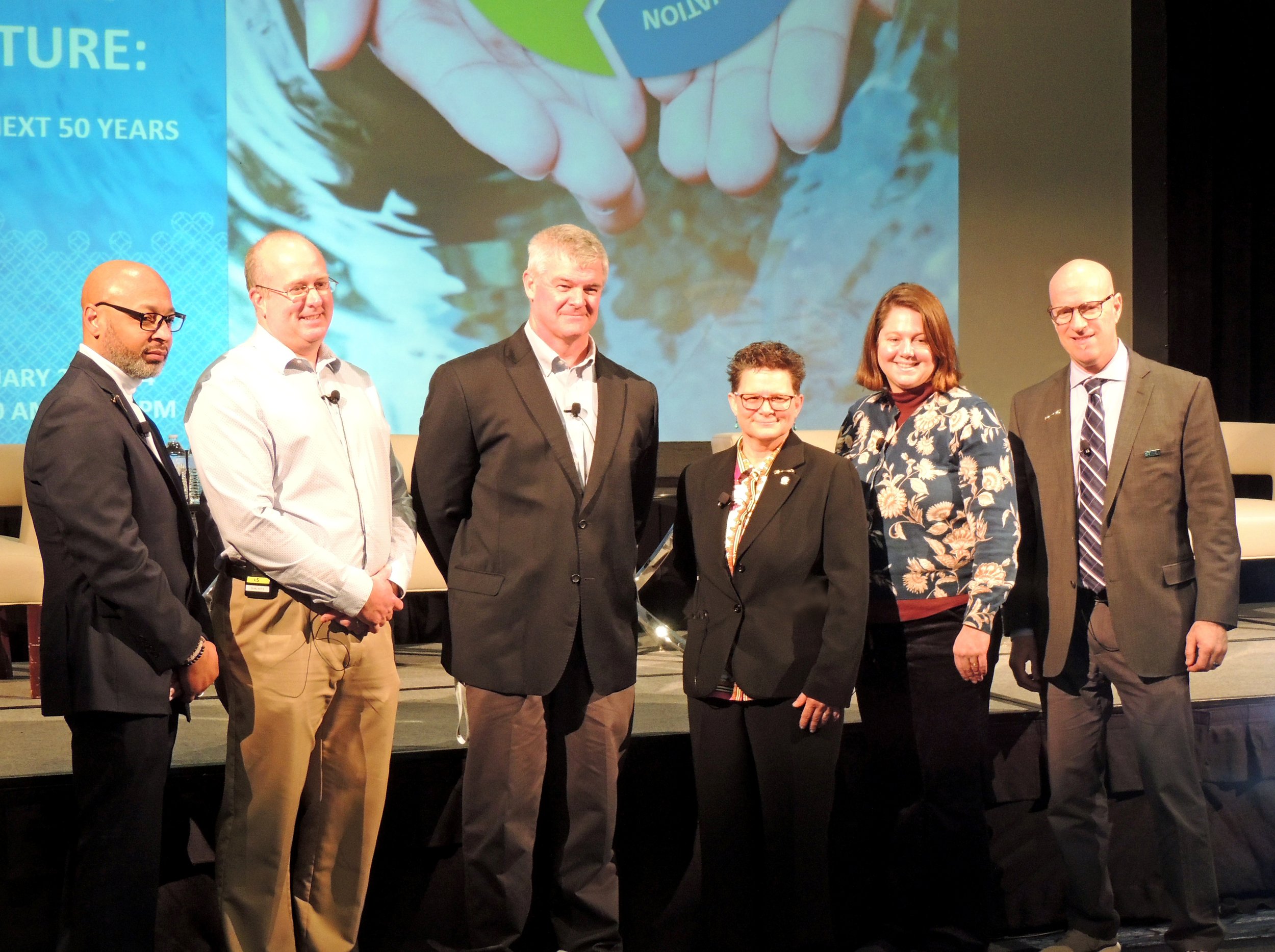
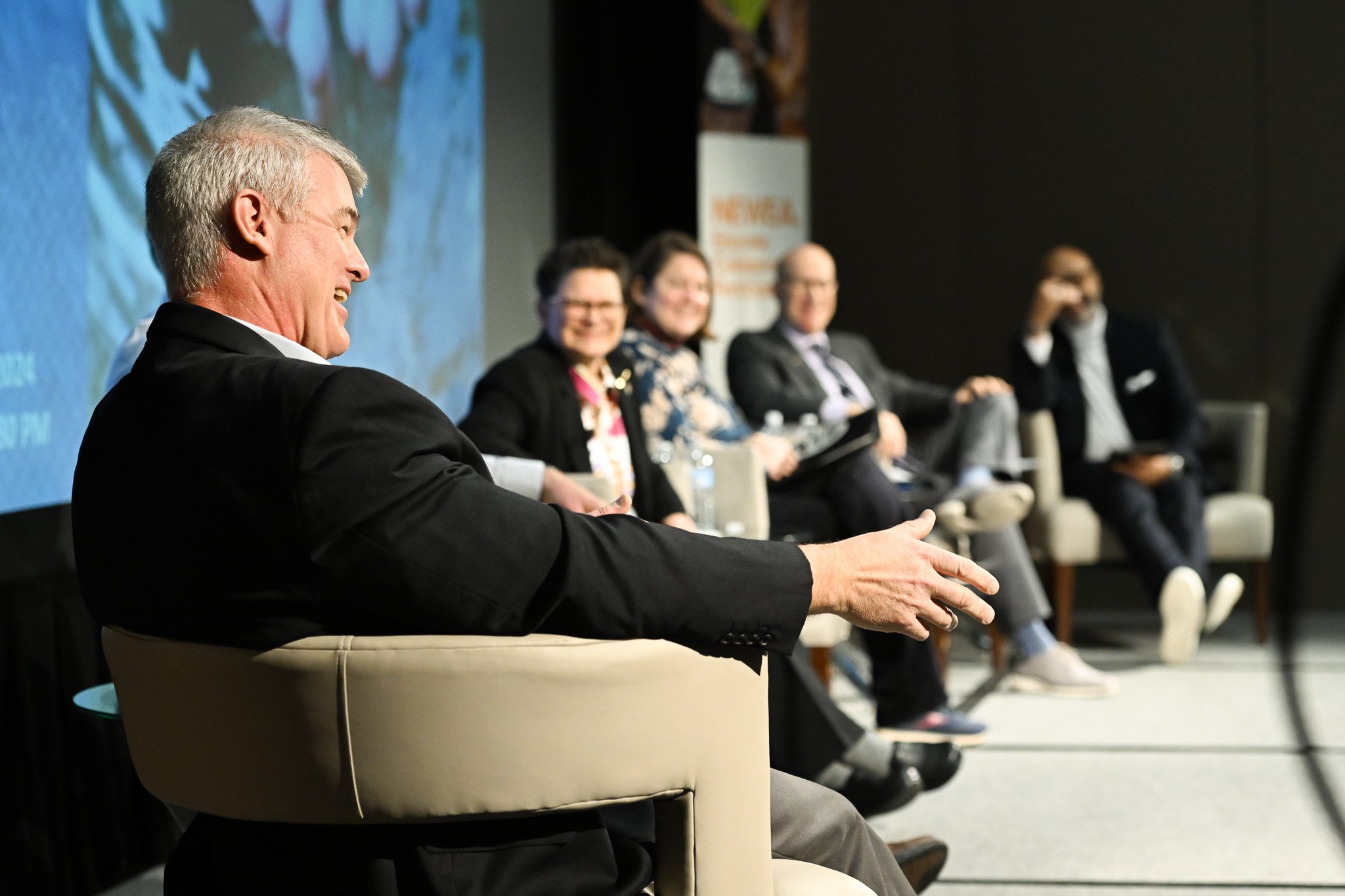

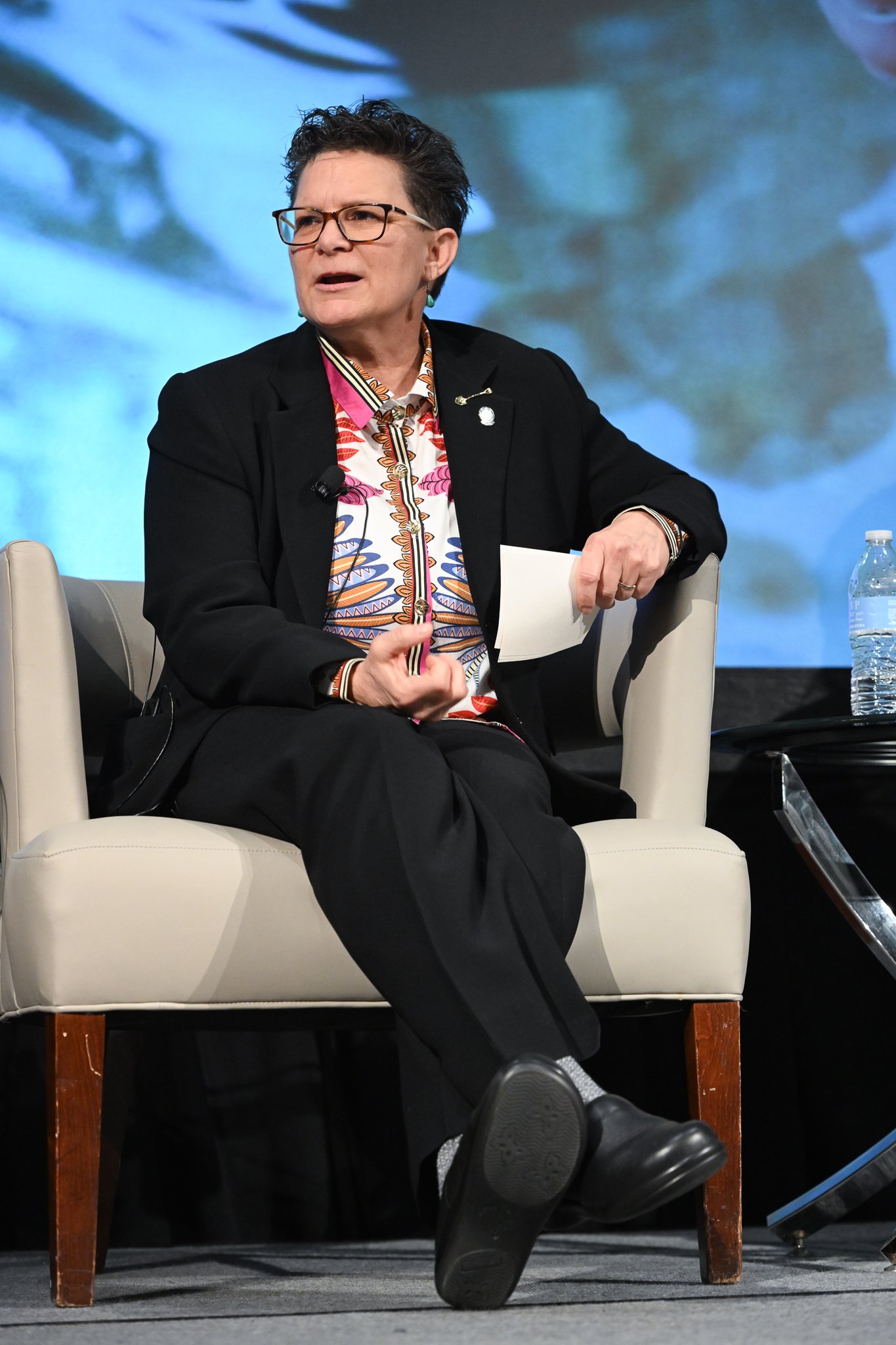
Photos courtesy of Charlie Tyler and NEWEA
Burke-Wells pointed out that water resource recovery facilities (WRRFs) are being asked to do a lot – monitor for COVID, reduce greenhouse gas emissions, and more – at a time they do not have enough support for their primary work. She said people still don’t know what WRRFs do and/or they have a negative perception of it. Of course, contaminants of emerging concern, such as PFAS, are a big challenge right now. Clear communications, specifically regarding risk communications, are challenging all of us right now. She also commented that current legislation and regulations are stifling innovation. She advocated for a new Clean Water Act that allows for adaptive management and innovative ways of solving the problems.
On the opportunities side of the coin, Burke-Wells had a short but solid list including:
WRRFs could become community anchors in the Circular Water Economy! Imagine charging or gassing up your car at the local treatment facility that supplies reusable water, nutrients, biogas/electricity and is sequestering carbon as well.
Lots of non-traditional funding is becoming available to WRRFs, including funding from the Department of Energy which is particularly focused on decarbonizing the wastewater sector.
New partnerships and collaborations – such as working with farmers/agriculture and energy companies. She mentioned NEIWPCC’s BioHub as an example of an effective collaboration between regulators, WRRFs, and the private sector to fast-track PFAS removal and destruction technologies for residuals.
Later on Tuesday, Burke-Wells presented on “The Future of Heat and Programs for Decarbonizing Wastewater Operations” with Michael McDonald from National Grid in an Energy session that was moderated by NEBRA Research Committee Chair Tracy Choinard and Past President Tom Schwartz.
Finally, Burke-Wells spoke in a sustainability session on Wednesday about reducing greenhouse gas emissions with a presentation titled “With Great Carbon, Comes Great Responsibility: Measuring and Mitigating Climate Impacts from Biosolids and Other Wastewater Operations.” The talk focused mainly on using the Biosolids Emissions Assessment Model (BEAM) and other tools to start accounting for GHGs.
Scott Firmin, NEBRA Board Member from the Portland Water District, presented “Working Towards a Sustainable Outlet for Maine Biosolids Through a Regional Solution” with John Ross from Brown & Caldwell. Scott also participated in an excellent session, a panel discussion on “Biosolids Management Risks and Regionalization Solutions” with the panel made up mostly of NEBRA members including Shelagh Connelly (Resource Management, Inc.), Karla Sangrey (Upper Blackstone Clean Water), Jim McCaughey (Narragansett Bay Commission), Dru Whitlock (Stantec) and Peter Loomis (CDM Smith). The engaging event was moderated by Vanessa Borkowski (Stantec) and Eric Spargimino (CDM Smith). The panelists discussed the drivers and progress with respect to biosolids regionalization within New England – including current programs, regulatory insights, and technical advancements.
This year, there were several NEBRA Members recognized by the U.S. Environmental Protection Agency (EPA) Region I New England awards, including the Industrial Pretreatment Staff at the Greater Lawrence Sanitary District led by Colleen Spero, Monitoring Manager. EPA Recognizes Massachusetts Industrial Pretreatment Program for Excellence | US EPA
Robert Wells of the Middlebury, Vermont, Wastewater Treatment Facility received EPA’s 2023 Wastewater Treatment Plant Operator of the Year Award. EPA Recognizes Vermont Wastewater Treatment Plant Operators for Excellence | US EPA
NEWEA’s Biosolids Management Achievement Award was given to Mary Waring, recently retired after a long career with Casella Resource Management. Mary also took home the Quarter Century Operator Award. Board Member Phil Tucker received the Alfred E. Peloquin Award as did Tom Tyler of the Metropolitan District Commission and Bernie Fleury, formerly with Essex Junction, Vermont. Although not a NEBRA member, Sarah Robertson was nominated by NEBRA and won the Paul Keough Award. Sarah has been reporting on various wastewater-related issues for The Montague Reporter, a local newspaper in Massachusetts. Her articles are balanced and informative, despite the headlines added by the editors. You can see just one example here: https://theshoestring.org/2023/05/25/proposed-law-would-aid-farms-polluted-by-pfas-tainted-sludge-fertilizers/).

